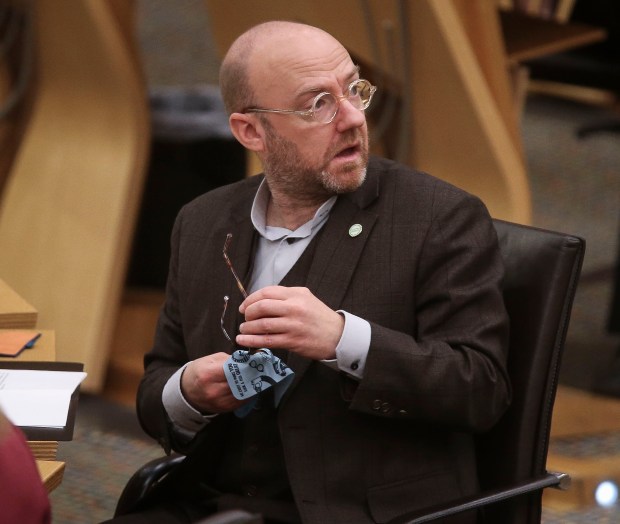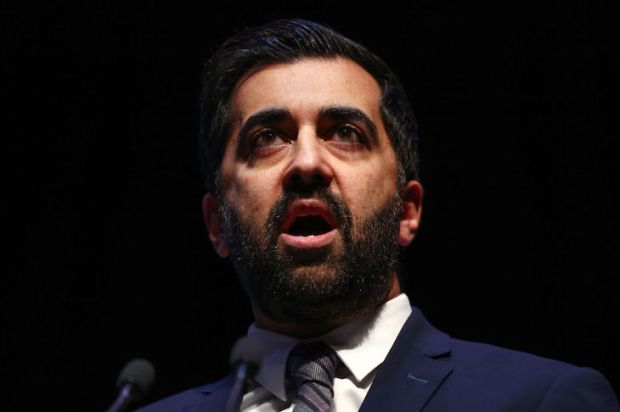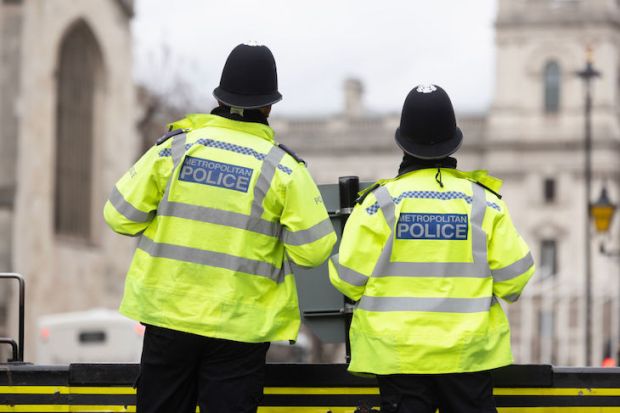Donald Burgess is the latest Briton to die after being hit by a police taser. He won’t be the last, but the circumstances of his death underscore the need for a wider debate about conducted energy devices.
Police were called to a care home in St Leonards-on-Sea on 21 June, where they found Burgess threatening staff with a knife. One officer sprayed him with PAVA, an incapacitant spray that the National Police Chiefs’ Council describes as ‘significantly more potent than CS’. The same officer then struck Burgess with a baton while another discharged a taser, sending an electric current coursing through the man’s neuromuscular system. He was then handcuffed and conveyed to hospital, where he died on 13 July.
Burgess was not an intruder at the care home, but a resident. He was 93, had one leg and was in a wheelchair. He was suffering from dementia. A post-mortem has been carried out but further cardio-pathology is required to determine a cause of death. The Independent Office for Police Conduct (IOPC) announced on Thursday that it has opened an investigation into the two officers involved after Sussex Police referred itself over ‘allegations of excessive use of force’. National guidelines require the use of tasers to be ‘necessary, fully justifiable and proportionate to the threat faced’.
Following witness interviews and a review of body cam footage, both officers have been served gross misconduct notices and told they are being criminally investigated for manslaughter. However, the IOPC says its actions ‘do not necessarily mean disciplinary proceedings or criminal charges will follow’.
While it has yet to be established where the taser caused or contributed to Burgess’s death, it represents another in an expanding body of incidents involving questionable deployment of the ‘less lethal’ weapon. Home Office figures record a 418 per cent increase in the use of tasers since 2010, up from 6,649 to 34,429 in 2020/21, although ‘use’ is defined to include brandishing the weapon without a discharge. In 2020/21, 90 per cent of taser incidents involved no discharge.
However, an IOPC review of taser incidents between 2015 and 2020 raised a number of issues, such as the use of tasers in ‘potentially unsafe locations or circumstances’ and evidence that officers ‘had not considered adequately the potential risk of injury to individuals’. In a quarter of incidents, the IOPC found evidence of tasers being used to force compliance, which the College of Policing’s authorised professional practice forbids. In one-third of cases, the IOPC said there were ‘potential missed opportunities for officers to de-escalate situations’. Home Office figures show that police drew tasers on 2,795 children in 2019/20 alone and discharged them on 134 occasions.
Mental ill-health, intellectual disability and behavioural disturbance was a factor in 58 per cent of cases reviewed by the IOPC and 81 per cent where death occurred. The body determined there were ‘indications that officers may have breached the standards of professional behaviour in 46 per cent of investigations involving mental health’. The review concluded that, ‘in incidents where mental health was a factor, individuals were more likely to be subjected to multiple and prolonged discharges than the overall sample’.
These findings are reinforced by cases like that of former soldier Spencer Beynon. Benyon, who served in Afghanistan and Iraq and was medically discharged with PTSD, died following a confrontation with police in Llanelli in 2016. Officers were called after Benyon was seen running barefoot, a bong in one hand and his dead dog in the other, shouting: ‘I am Jesus’. Police found him slumped against a wall, bleeding heavily from the neck and unresponsive. One officer tasered him after claiming Benyon charged towards him, which other witnesses at the scene dispute. An inquest last year in which the coroner instructed that the taser be found not to have caused Benyon’s death resulted in a hung jury.
Andrew Pimlott, a 32-year-old who suffered from depression, was fatally burned in a taser incident in his parents’ back garden in Plymouth in 2013. After Pimlott doused himself in petrol, a responding officer fired his taser ‘to stop him harming himself’, with an inquest jury ruling the taser was the ‘likely’ cause of ignition. The officer was found to have acted in line with his three-day taser training course but Pimlott’s parents were awarded compensation from Devon and Cornwall Police.
The IOPC also concluded that black people were ‘less likely to be involved in taser discharges’ but when they were, ‘they were more likely to be tasered for prolonged periods’. The standard duration of discharge is five seconds and while only 29 per cent of whites are tasered for longer, the figure jumps to 60 per cent for blacks. Former Aston Villa striker Dalian Atkinson was killed in 2016 when a police officer tasered him and kicked him twice in the head. He was subjected to an electric current for 33 seconds, six times the standard discharge duration, and suffered a fatal cardiac arrest.
Atkinson was experiencing a mental health crisis and told the officers that he was the Messiah. PC Benjamin Monk was convicted of manslaughter and sentenced to eight years in prison. Another black man, Justice Livingstone, was tasered nine times by the Metropolitan Police on a train in Norwood Junction in 2011. Officers suspected him of carrying a firearm. The weapon, found in his briefcase, was a plastic toy gun he had bought for his son’s birthday.
Whether or not tasering directly caused Donald Burgess’s death, the use of this kind of force on a 93-year-old wheelchair-bound amputee with dementia, even one holding a knife, is another reason to be sceptical about the merits of these devices — or at least the procedures and training on their use. (At present, officers can be issued with tasers after just 18 hours of training and the minimum duration of annual refresher training is only six hours.) Nor is it the first time officers have deployed a taser against a disabled person. In 2012, Colin Farmer, a 61-year-old blind man, was tasered by a police officer who mistook his white cane for a samurai sword. In 2005, bus passenger Nicholas Gaubert was tasered twice after failing to respond to officers. He was a diabetic and had slipped into a hypoglycaemic coma. Gaubert suffered PTSD as a result.
It’s easy enough for those of us who don’t routinely put our lives in danger to criticise the split-second decisions of police officers confronting unknown threats in live scenarios. Officers attend call-outs well aware of the fate colleagues have met with. Names like Michael Swindells, Sharon Beshenivsky, Nicola Hughes and Fiona Bone may have faded from public consciousness but they are still remembered by police officers and for good reason. It is possible to respect the difficult job the police do and be mindful of their safety while also protecting the public, especially vulnerable people, from excessive and dangerous use of force. There is a strong and growing case for a debate, in parliament or elsewhere, about the role of tasers in British policing.
Got something to add? Join the discussion and comment below.
Get 10 issues for just $10
Subscribe to The Spectator Australia today for the next 10 magazine issues, plus full online access, for just $10.




















Comments
Don't miss out
Join the conversation with other Spectator Australia readers. Subscribe to leave a comment.
SUBSCRIBEAlready a subscriber? Log in